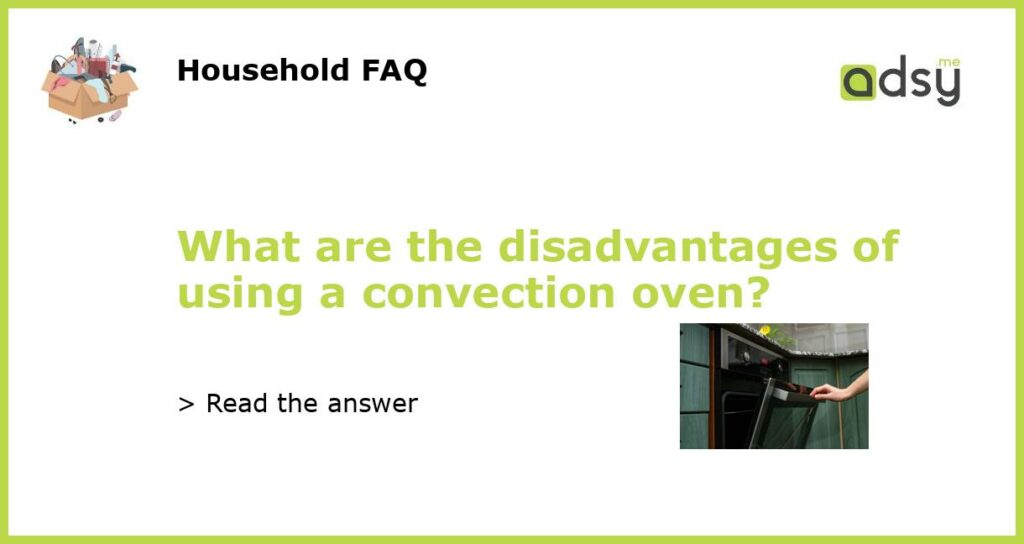Disadvantages of Using a Convection Oven
A convection oven is a fantastic addition to any kitchen, but like any piece of equipment, it has its drawbacks. Here are some of the disadvantages of using a convection oven:
Longer Cooking Times
Convection ovens work by circulating hot air around the food, cooking it evenly and quickly. However, there is a tradeoff for this efficiency – the cooking time is often longer than in a conventional oven. This is because the fan in a convection oven can cause the moisture to cook off more quickly, which dries out the food. As a result, you may need to add extra moisture to your dishes, such as by basting them.
Higher Energy Usage
Another disadvantage of convection ovens is that they tend to use more energy than conventional ovens. This is because the fan and additional heating element required to circulate the hot air use more electricity. While the difference in energy usage may be minimal for a single use, it can add up over time, particularly if you use your oven frequently.
Difficulty with Baking Certain Foods
Although convection ovens are great for cooking meats and vegetables, they can be a challenge for certain baked goods. For instance, delicate baked goods that require rising – such as cakes, soufflés, and custards – may not fare as well in a convection oven. This is because the fan can cause the batter to lose its loft, which will cause the baked good to be denser and flatter.
Inconsistent Cooking Racks
While convection ovens are designed to cook evenly, they can still create inconsistent results if you’re cooking with multiple racks. This is because the hot air from the fan can’t circulate as effectively between the racks – particularly if they are too close together. This can lead to overcooked food on one rack and undercooked food on another.
Higher Price Point
Finally, one of the biggest disadvantages of convection ovens is their higher price point compared to conventional ovens. While the price of convection ovens has come down in recent years, they still tend to be more expensive than their conventional counterparts. This can make them a less appealing option for those on a tight budget or those who only cook occasionally.






